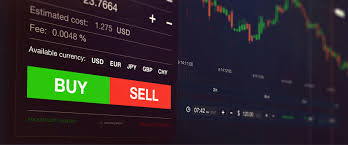
In the world of finance, the forex currency market trading MT5 Forex Brokers have carved a niche that is both lucrative and complex. The Forex currency market, or the foreign exchange market, is the largest financial market in the world, with a daily trading volume exceeding $6 trillion. Understanding the intricacies of this market is essential for anyone aspiring to navigate it successfully.
Introduction to Forex Trading
Forex trading involves the exchange of one currency for another and is conducted over-the-counter (OTC) through a network of banks, brokers, and financial institutions. Unlike stock markets that operate on exchanges, the Forex market functions 24 hours a day, five days a week, making it a dynamic and accessible arena for traders globally.
Market Structure
The Forex market is divided into three main segments: the retail market, the institutional market, and the interbank market. Retail traders are individual investors who trade in smaller amounts, while institutional traders encompass larger entities like banks, hedge funds, and financial institutions. The interbank market is where major banks trade currencies amongst themselves, setting the stage for currency pricing.
Currency Pairs
In Forex trading, currencies are traded in pairs. Each pair consists of a base currency and a quote currency, such as EUR/USD, where the Euro is the base currency and the US Dollar is the quote currency. The price indicates how many units of the quote currency are needed to purchase one unit of the base currency. Understanding currency pairs is fundamental for making informed trading decisions.

Types of Orders
For effective trading, traders utilize various types of orders, including market orders, limit orders, and stop-loss orders. A market order executes immediately at the current market price, while a limit order sets specific price levels for execution. Stop-loss orders help traders mitigate risks by automatically closing positions when a currency reaches a predetermined price.
Fundamental and Technical Analysis
Successful traders often rely on two types of analysis: fundamental and technical. Fundamental analysis involves examining economic indicators, geopolitical events, and interest rates to predict currency movements. Technical analysis, on the other hand, focuses on historical price data and chart patterns to identify potential trading opportunities. Combining both approaches can offer a comprehensive view of the market.
Risk Management
Risk management is crucial in Forex trading. The market’s inherent volatility can lead to significant gains or losses in a short period. Traders should employ strategies like setting stop-loss orders, limiting the leverage utilized, and diversifying their portfolios to manage risk effectively. A sound risk management plan can protect traders from substantial financial losses.
Trading Strategies
Several trading strategies can be employed in the Forex market, including scalping, day trading, swing trading, and position trading. Scalping involves making quick trades to profit from small price movements, while day trading means entering and exiting trades within the same day. Swing trading allows traders to capture price swings over several days or weeks, whereas position trading focuses on long-term trends.

The Role of Technology
The rise of technology has transformed Forex trading significantly. Trading platforms such as MetaTrader 4 (MT4) and MetaTrader 5 (MT5) offer traders advanced tools for analysis, order execution, and risk management. Automated trading systems and expert advisors also enable traders to execute strategies without constant monitoring. Staying updated with technological advancements is vital for maintaining a competitive edge.
The Importance of Education
Forex trading is not just about making money; it requires a strong foundation of knowledge and continuous education. Traders should seek out reputable resources, attend webinars, and engage with the trading community. Understanding market dynamics, practicing effective strategies, and learning from both successes and failures contribute to a trader’s progress.
Psychology of Trading
The psychological aspect of trading can often be overlooked. Emotions like fear and greed can lead to impulsive decisions that deviate from a trader’s strategy. Developing the right mindset, maintaining discipline, and sticking to a trading plan are crucial for long-term success. Many traders find that keeping a trading journal helps them reflect on their decisions and improve their mindset.
Conclusion
The Forex currency market presents both opportunities and challenges. While the potential for profit can be enticing, it is essential for traders to approach the market with caution and knowledge. By understanding the market structure, employing effective trading strategies, managing risks, and continuously educating themselves, traders can position themselves for success in the fast-paced and ever-evolving world of Forex trading.
